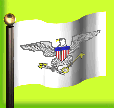
Multiple Choice
Short Response
Extended Response
The American Eagle
No other bird is quite as famous. American eagles have been around so long, they’re a U.S. fixture. Just do a little bird watching on your quarters and dollar bills. Check out your local post office. Look at the top of flagpoles. Is the eagle an important part of American culture? Without a doubt!
To appreciate the current popularity of these birds, you need historical perspective. American eagles now occupy a commanding perch as the premier American symbol, but for hundreds of years they have had their ups and downs.
Centuries before the American Revolution, eagles were displayed on ancient monuments, statues, and coins. Then in the American colonies, the eagle was used on a 1700 brass token in New York and a 1776 copper penny in Massachusetts.
For a moment in American history, though, eagles almost didn’t get the seal of approval. On the sweltering afternoon of July 4, 1776, committees began to design the official seal of the United States, the mark that is imprinted in wax on all our country’s official treaties. A final version was not adopted until June 20, 1782 – six years later. Obviously, this was not an easy task.
The committees finally agreed on a design that includes the distinctive American eagle, bald-headed and beautiful, as the large central figure, bearing a shield, clutching an olive branch in its right talon, and thirteen arrows in its left. Just in time, too. The seal was needed in a few months for signing the peace treaty with Great Britain.
How did those planners finally determine that American eagles would be the very best symbol? One theory is that they looked back at the many eagles connected with ancient majesty, power, and military victory. But Ben Franklin had a different opinion. He wanted the U.S. to adopt the turkey as its emblem. Franklin argued that, unlike eagles, the turkey is native to America. He also pointed out that the Thanksgiving gobbler is quite fierce if attacked, but eagles are known to steal other birds’ prey.
While the committees were working on the seal, General George Washington was making a fashion statement. During his Revolutionary War service as commander of the American troops, he chose to wear a coat adorned with eagle-design brass buttons. Everywhere he went, patriotic crowds waved items bearing the picture of an eagle. His taste in uniforms probably helped the committee members decide to include the eagle.
Once the eagle design was selected, eagles were the bird of honor. You could see them on weathervanes, silver cups, buttons, money, ships, door knockers, over the doors of buildings, and woven into cloth. Just about everything for sale displayed an eagle. By the turn of the century (from the 1700’s into the 1800s), Paul Revere was handing out business cards engraved with an American eagle, its wings outstretched, bearing the shield, the arrows, and the olive branch.
American eagles continue to be popular today. Look in the phone book for businesses with the word “eagle” in their names, or scan store shelves for eagle brand names. This bird is so well known around the world that the U. S. host symbol for the 1984 Summer Olympics in Los Angeles was a cartoon-style American eagle sporting a red, white, and blue top hat. If that isn’t enough name and image recognition, how about eagles in outer space? In 1969 when the Lunar Lander touched down on the moon for the first time, its name was announced worldwide with these words: “The Eagle has landed.”
Recently American bald eagles were news again. After many years of concern, they’ve been taken off the endangered species list in the continental United States. What helped these magnificent birds regain a talon-hold? Laws that ban the use of the pesticide DDT, for one thing. In addition, there are laws that protect eagles from hunters, prey, and habitat threats. Thanks to the efforts of many Americans, the number of eagle families has increased greatly, according to wildlife officials, from only 417 nesting pairs in 1963 to 5,748 pairs in 1998! Far from extinct, the American eagle is flying high!
—Dr. Rosemary Potter